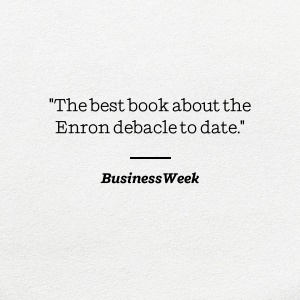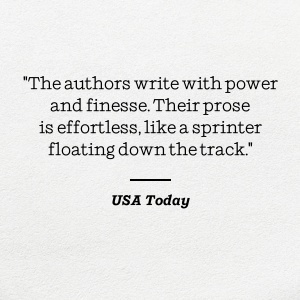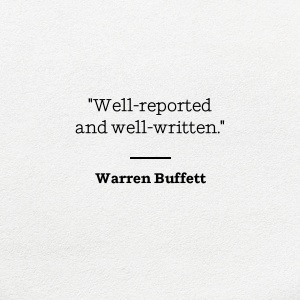

Full description not available



S**N
'Let's sell it--and we'll figure out everything else later."
The Smartest Guys in the Room by Bethany McLean and Peter Elkind digs into one of the most infamous and largest corporate business scandals in America’s history. This was such a wild ride. Everything from corporate greed, mismanagement, cowardice, rivalry, a toxic work culture, and a need to constantly prove profitability to the public led to one fraud after another until Enron was literally built on a house of cards, or, to be more exact, on a house, nay, a mountain of debt. All this was hidden from the public investors they were supposed to protect, while executives were profiting from the soaring stock price.“So you take the dog and paint its feet yellow and its fur white and you paste an orange plastic beak on its nose, and then you say to your accountants, ‘This is a duck! Don’t you agree that it’s a duck?’ And the accountant say, ‘Yes, according to the rules, this is a duck.’ Everybody knows that it’s a dog, not a duck, but that doesn’t matter, because you’ve met the rules for calling it a duck.” - Former Enron employeeBack in the early 2000s, when it all came crashing down, I remember only a few bits and pieces here and there. Mainly, I saw on television old white guys in the headlines dominating news channels regarding a business scandal and fraud. I failed to realize or feel the impact. Decades later, with more financial knowledge and investments made in the stock market, I wanted to finally revisit this saga and learn just how it all went down. It definitely blew my mind.“I’ve thought about this a lot, and all that matters is money. You buy loyalty with money. This touchy-feely stuff isn’t as important as cash. That’s what drives performance.” - Jefferey Skilling’s conversation with Terry ThornA tremendous effort has obviously been made by the authors to untangle the Enron mess after they imploded to give us the inside scoop on how this scandal went down. Although it is a fairly big book, it clearly deserves every page, in my opinion, as it slowly and methodically laid out from the very start of Enron to its ultimate demise. There are a lot of players and actions involved. Although no CPA myself, I was shocked to at least have understood the mark-to-market strategy of reporting year-end earnings, especially how it was used to game the system. Although there were many other accounting tricks used to commit fraud, it basically came down to hiding losses on their balance sheet and presenting itself every quarter to investors, analysts, and Wall Street as the coolest company ever in hopes of raising its stock price.In fact, it was anything but effortless; there was nothing at Enron that required more effort, more cleverness, more deceit-more everything-than hitting its quarterly earnings targets. - Book authorsThe last few chapters of the book were particularly exciting and kept me reading all night. The inevitable crash was coming. You knew in hindsight, so you just kept waiting for it until it finally started to unravel, and it was like watching a car crash in slow motion, but only because we now know the full story and extent of the problem and how Enron got there. I can’t help but wonder how things would have turned out if Enron weren’t as crazed about boasting their stock price and actually reporting true earnings as well as executing on their actual ideas. Would they have been in the coveted top 10 position in the S&P500 index today? They genuinely had some good ideas and were truly ahead of their time, but they didn’t have the patience to see things through, not to mention a host of other issues as well.
E**N
Many Lessons Learned.
I read both this book, as well as "Conspiracy of Fools". While I liked the latter book better, this one is also a very telling and entertaining look at the rise and fall of Enron. Starting with an overview of the players and the original pipeline company that later became Enron, the book takes the reader through the rise of one of the greatest house of cards in modern business history.The company and the history are fairly well known, and the reader will find each book on the subject providing a rather unique view. This book is no execption. The lessons that it tends to bring to the fore are ones of transperancy, simplicity, oversight and common sense.Noting that many of the issues around Enron's house of cards were in somewhat plain sight to anyone looking for them, and the element of unrestrained greed permeated the entire enterprise, the authors bring forth a storyline that would be amazing and incredible, had it not been true.The reader will view the simplicity of structure, the need for honesty and clarity in disclosure, and the abject understanding of the economics (not the financial reporting) of the transaction is absolutely critical. A lesson applied out of Enron MUST be "don't let the accounting supersede the economics of a transaction", and "The stock price is a reflection of a well run company over time. It is one form of reflective measurement, not a metric to be manipulated or explicitly managed". Stick to solid, findamental business. Finally, the lesson of cop a plea and collaborate. In hindsight, Andy Fastow is fre, and Jeff Skilling has 20 years left in prison. One fought the law, the other collaborated. Look at the history and the outcomes. If you screwed up, admit it, take your punishment, and move on.A good lesson, a good book and a great reminder 10 years later
Trustpilot
3 days ago
1 month ago